The Cribbar: The story behind Newquay's big wave surf spot
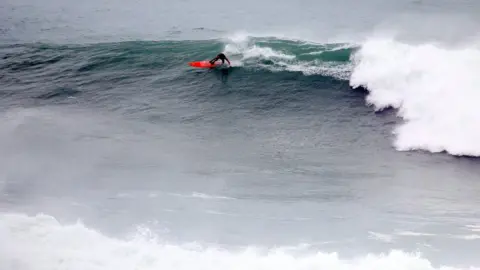 Sarah Bunt/@sarahbuntphotography
Sarah Bunt/@sarahbuntphotographyThe Cribbar has become one of the UK's best known big wave surfing spots since first being ridden in 1966.
Slotted beside Fistral Beach in Newquay, Cornwall, its 40ft (12m) waves attract some of the best surfers.
It is created by waves moving over a scattering of reefs 500ft (150m) off Towan Head and only comes to life with the right combination of wind and swell a few times a year.
Surfers who describe it as "challenging", "death-defying" and an "evil beast" tell BBC News what makes it special.

'Heading into the unknown'
Roger Mansfield was 14 when he stood on Towan Head and watched the first surfers tackle the Cribbar in 1966.
Australians Rick Friar, Pete Russell and Johnny McElroy and American Jack Lydgate paddled out on 10ft (3m) Malibu boards.
There were no wetsuits or leashes in those days, and there was only a very small surfing community.
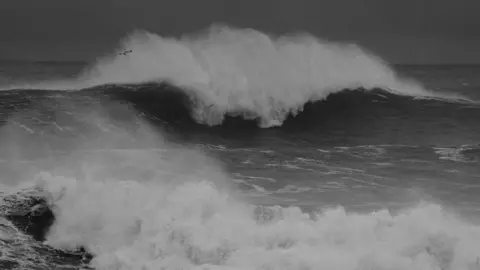 Evie Johnstone/@eviejohnstone.stylist
Evie Johnstone/@eviejohnstone.stylistMr Mansfield, author of The Surfing Tribe, a history of British surfing said: "No-one outside surfing knew there was a big wave called the Cribbar.
"There were about 20 people watching and everyone was pretty excited and anxious because none of us had been out in waves that big."
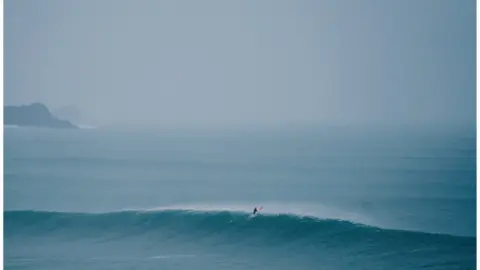 Ted Simpson/@isola__ted
Ted Simpson/@isola__ted When the surfers paddled out that day, Jack Lydgate wiped out on a wave and because he had no leash, it meant an hour-long swim to gather his board from the rocks.
Mr Mansfield said it was "death-defying stuff" and conquering the Cribbar was a breakthrough for the sport in England.
"It was like the Starship Enterprise heading into the unknown," said Mr Mansfield who went on to become British champion in 1970.
"These people were the pioneers of big wave surfing.
"I just realised the bar had been raised for the sport I was getting into."

'Shifty wave'
Professional surfer Tom Butler, 32, first experienced the Cribbar when he was 16 and has since gone on to surf many of the biggest and heaviest waves in the world.
"Everything comes together when the swell is big, with light winds and a low tide, which makes it quite rare," he said.
"It's not as heavy as some of the spots I have surfed around the world, but it's more challenging."
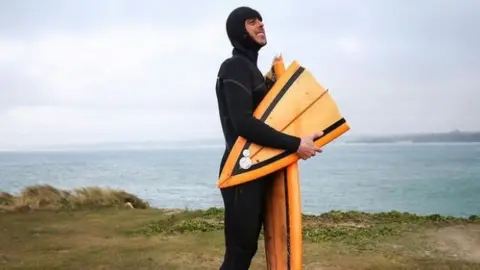 Cameron Smith
Cameron SmithStrong currents pull surfers out of position so without constant paddling they can unexpectedly find themselves in a dangerous zone where waves are breaking off the rocks..
"You're out in the middle of the sea and it's challenging with a lot of current moving," he said.
"The sweet spot is like a 30m (98ft) area where it goes shallow.
"But it's a shifty wave, so it's hard to be in the right spot."
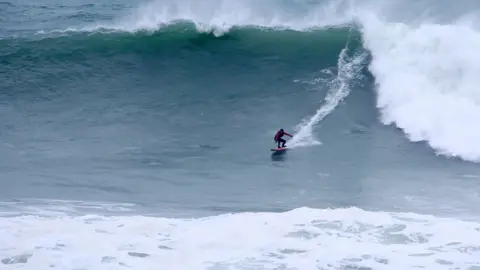 Sarah Bunt/@sarahbuntphotography
Sarah Bunt/@sarahbuntphotography
'Not for the inexperienced'
Bodyboarder Rob Barber remembers breaking a leash and being washed up on to rocks at Towan Head in a 15ft (4.5m) swell.
"I am super fortunate to have competed in big waves around the world and the Cribbar for me is still one of the heaviest spots," said Mr Barber, watersports instructor and founder of Newquay Activity Centre.
"There's a few different reefs there, so the waves can sort of stand up on some reefs and then sort of mutate and gurgle into these evil beasts.
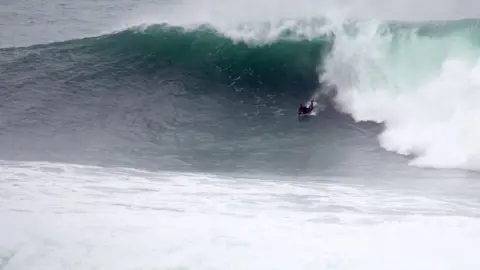 Sarah Bunt/@sarahbuntphotography
Sarah Bunt/@sarahbuntphotography"You are also out there in the middle of nowhere so it's quite hard to maintain your position where the peaks are coming in and be in the right spot to get one.
"You can find yourself getting caught out and a wave breaking on you out there is something you won't forget for sure."
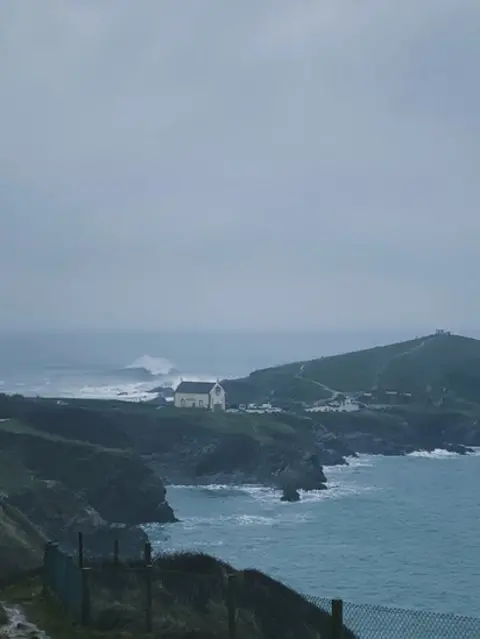 Ted Simpson/@isola__ted
Ted Simpson/@isola__ted Mr Barber also first paddled out to the Cribbar when he was 16.
"The Cribbar is definitely not for the inexperienced," he said.
"I'd say to people that are looking to get into this side of wave riding that they should just take it slowly.
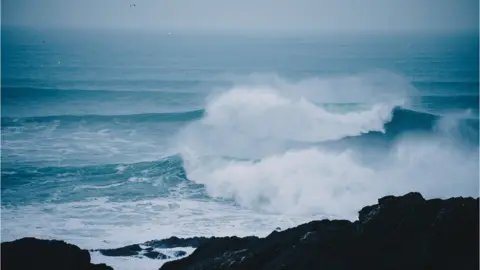 Ted Simpson/@isola__ted
Ted Simpson/@isola__ted "They should always have a plan in place, an emergency action plan, what they're going to do if everything goes wrong.
"And they should have buddy systems so they're telling people when they're going in the water."
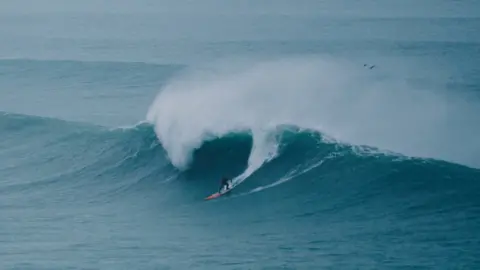 Ted Simpson/@isola__ted
Ted Simpson/@isola__ted 
'Concentrated wave energy'
Paul Russell, professor of coastal dynamics at the University of Plymouth, said the Cribbar's shifting peaks were created by a scattering of reefs off the end of the headland.
"Big waves move fast in deep water, but as these waves pass over the reefs, they slow down, and wave energy is concentrated, so the waves grow in height and peak up," he said.
"The fact that the Cribbar reefs are stuck out to sea, and surrounded by deep water, means these breaking waves are very powerful."
 Ted Simpson/@isola__ted
Ted Simpson/@isola__ted 
'Shooting at the Cribbar is great'
Sarah Bunt, from St Agnes in Cornwall, has been taking photographs of surfers for 16 years, but it is big waves like the Cribbar and Nazare in Portugal that get her excited.
"I just like to be where the biggest waves are, that's what gives me the greatest buzz, I'm addicted to them."
The most recent set she photographed at the Cribbar was when the conditions brought it to life in February.
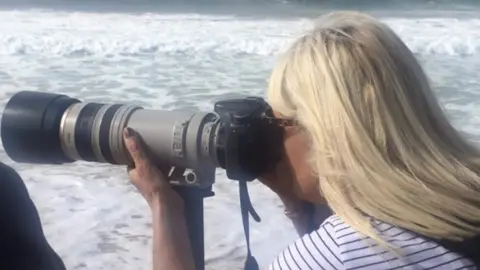 Sarah Bunt
Sarah Bunt"Shooting at the Cribbar is great because you are high up on the headland and although the waves are a long way off you get a great vantage point," she said.

Follow BBC News South West on Twitter, Facebook and Instagram. Send your story ideas to [email protected].
